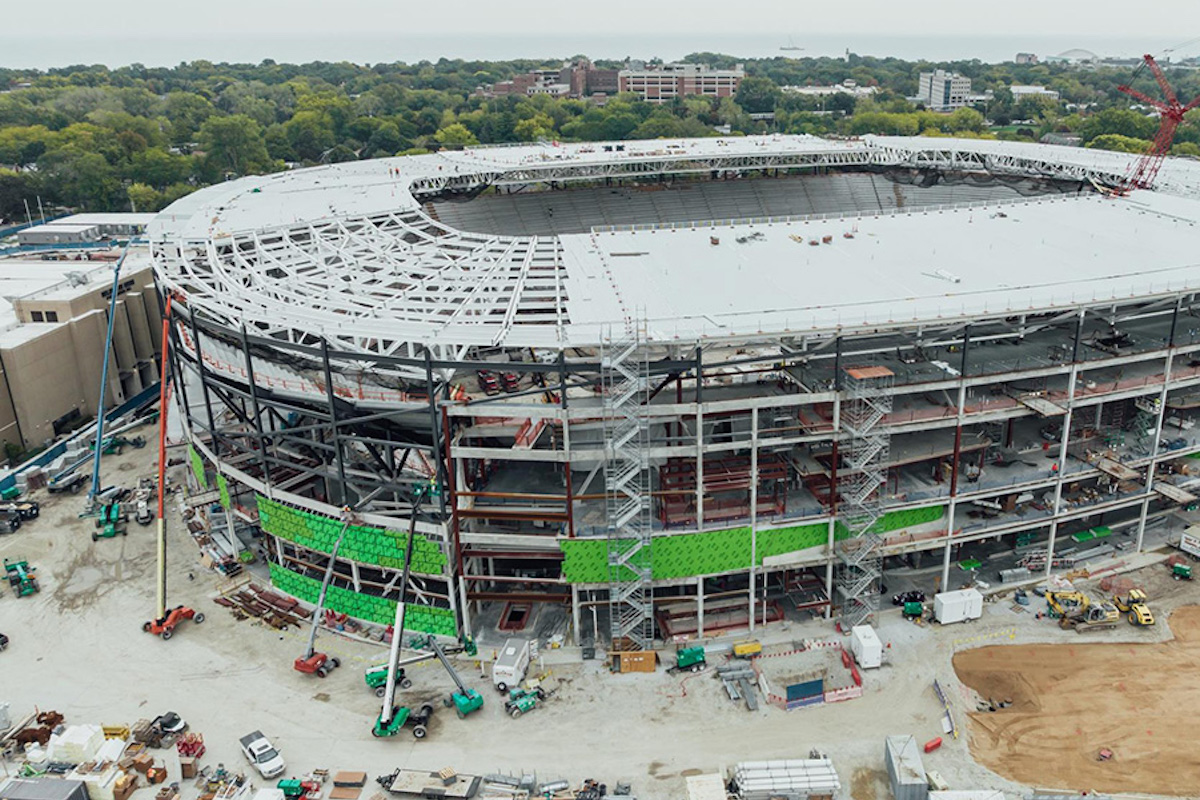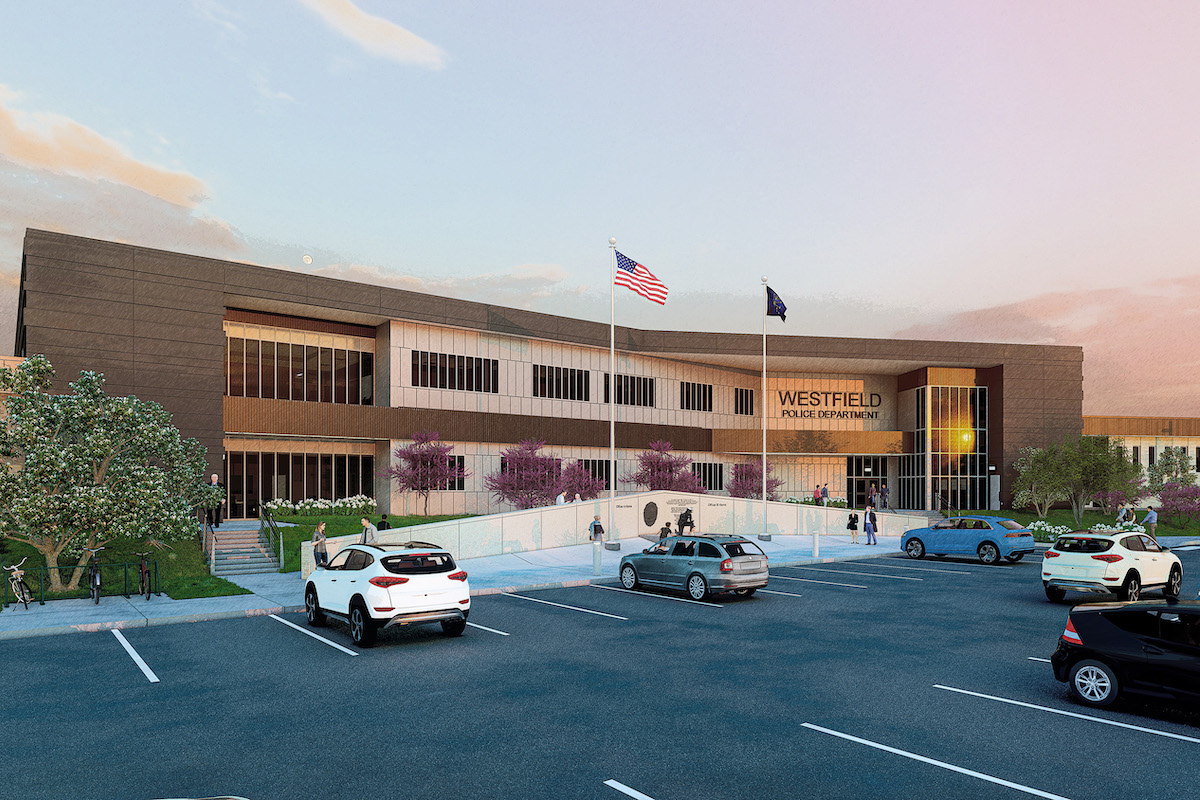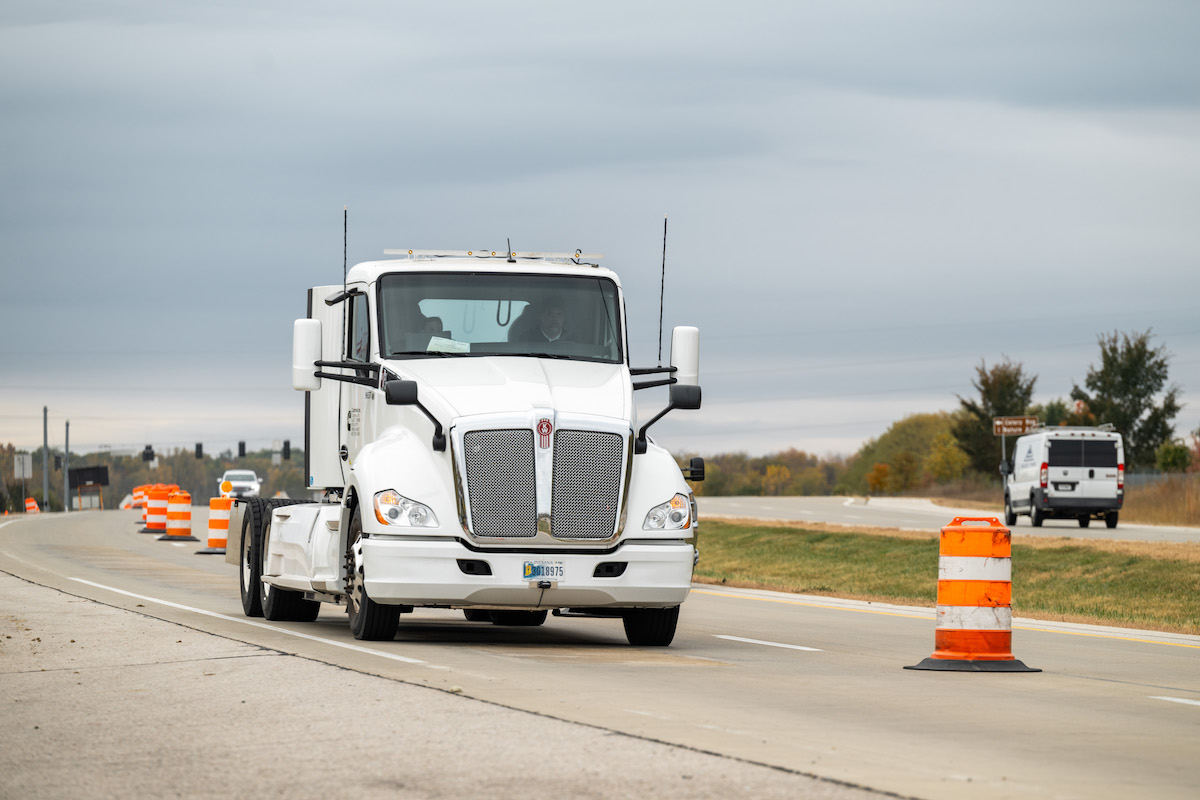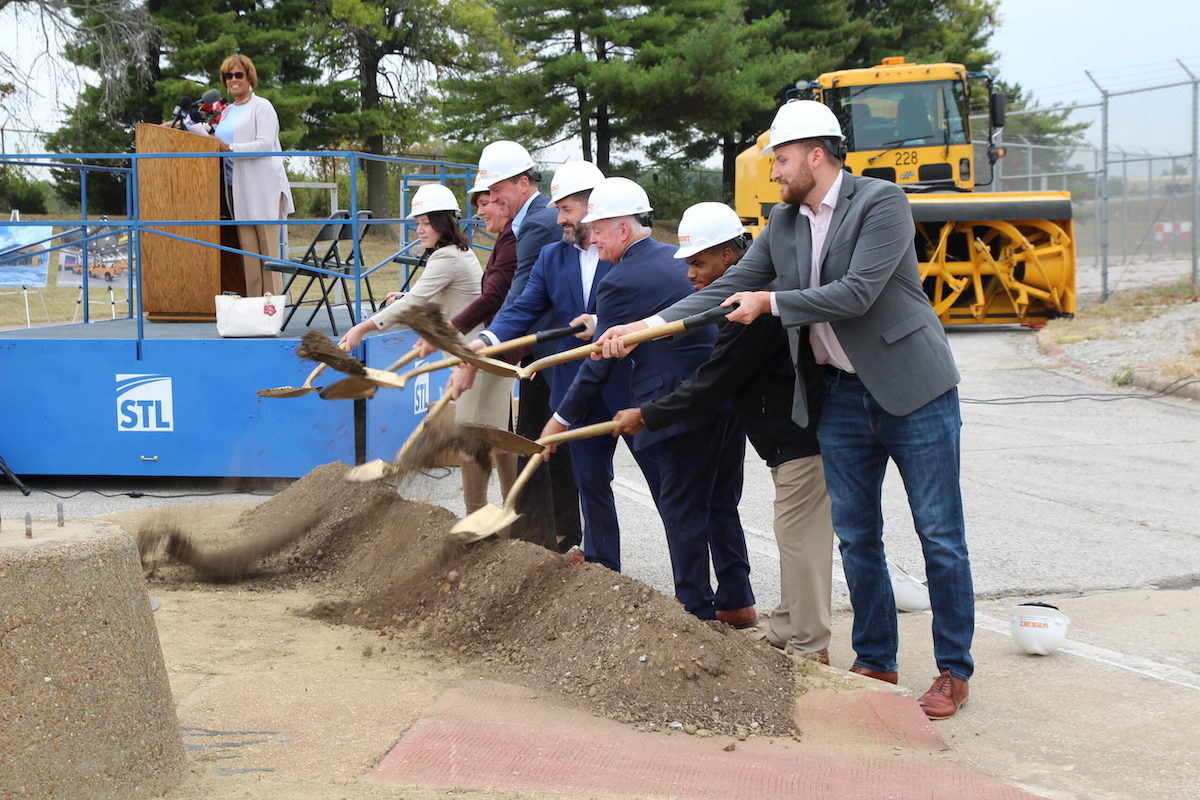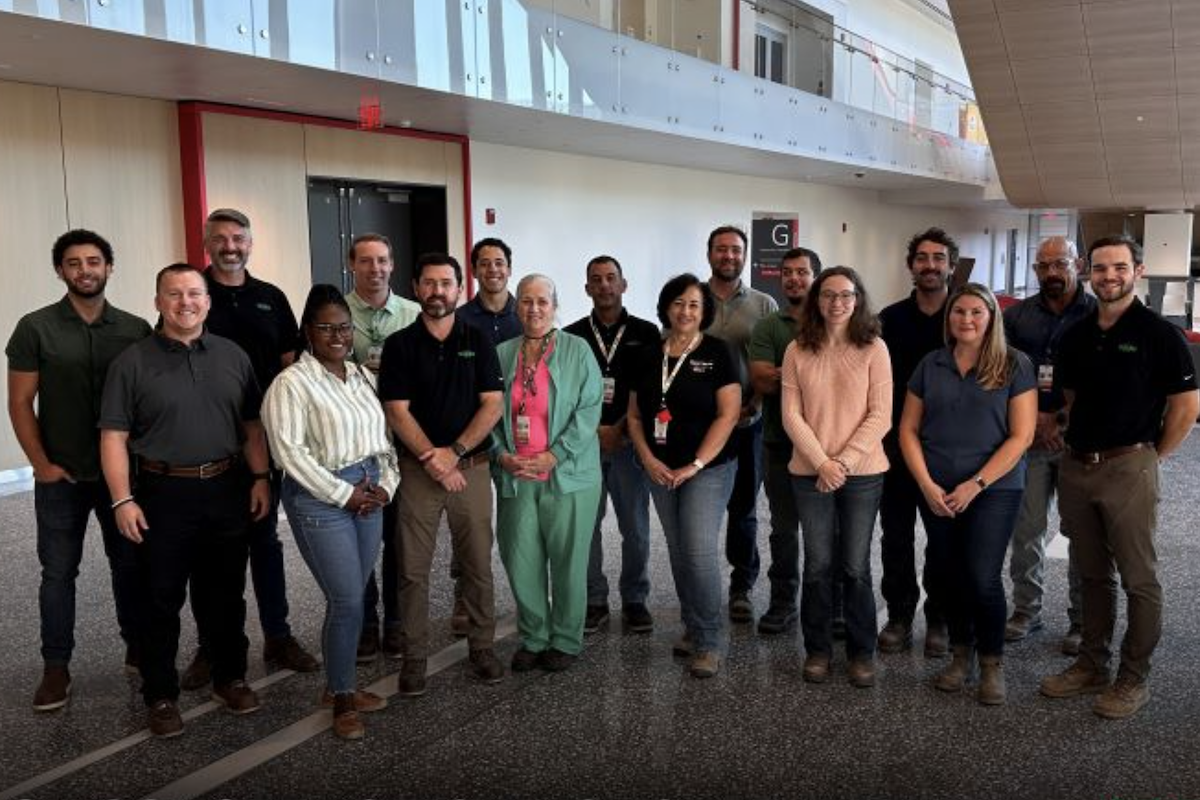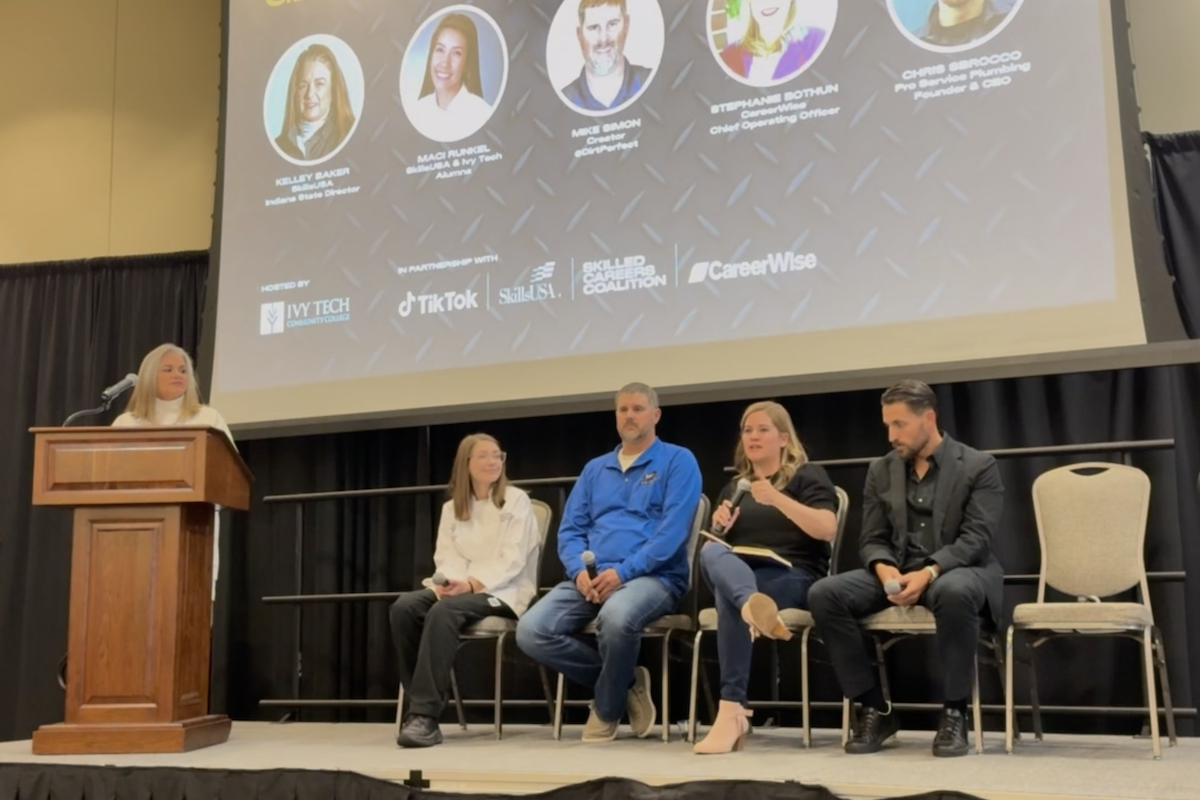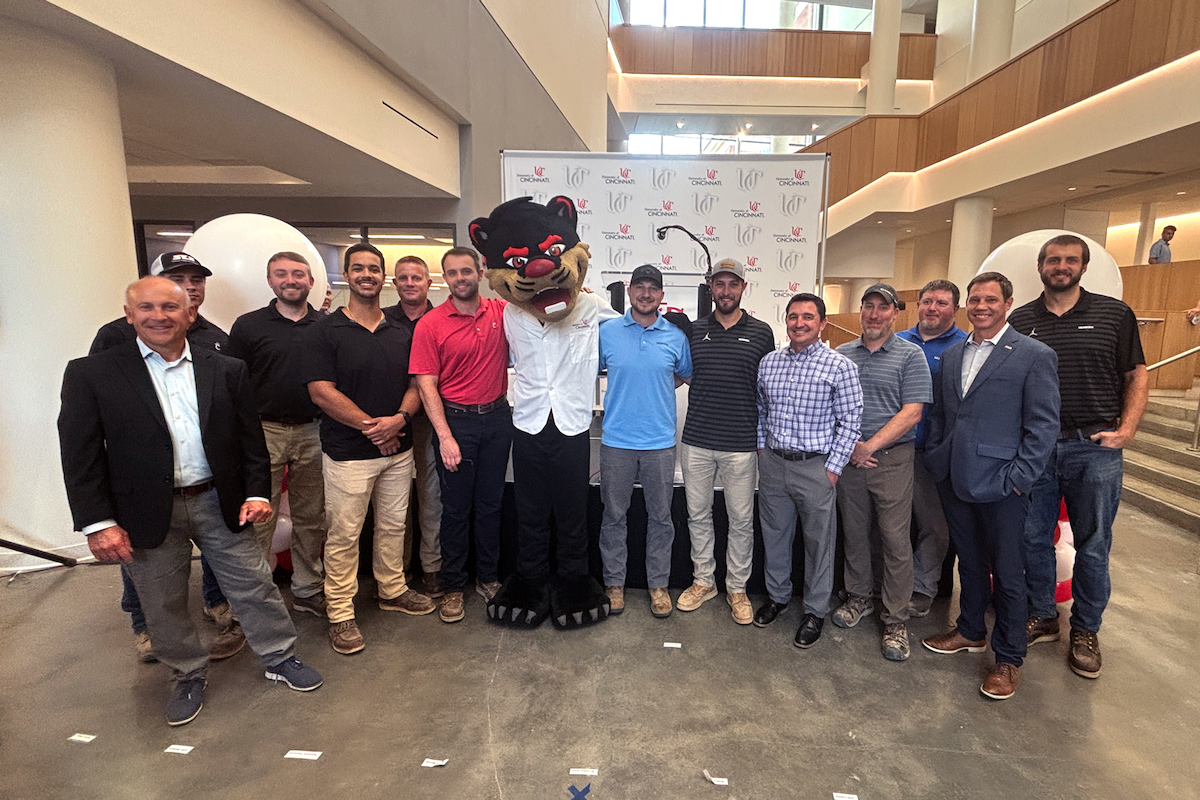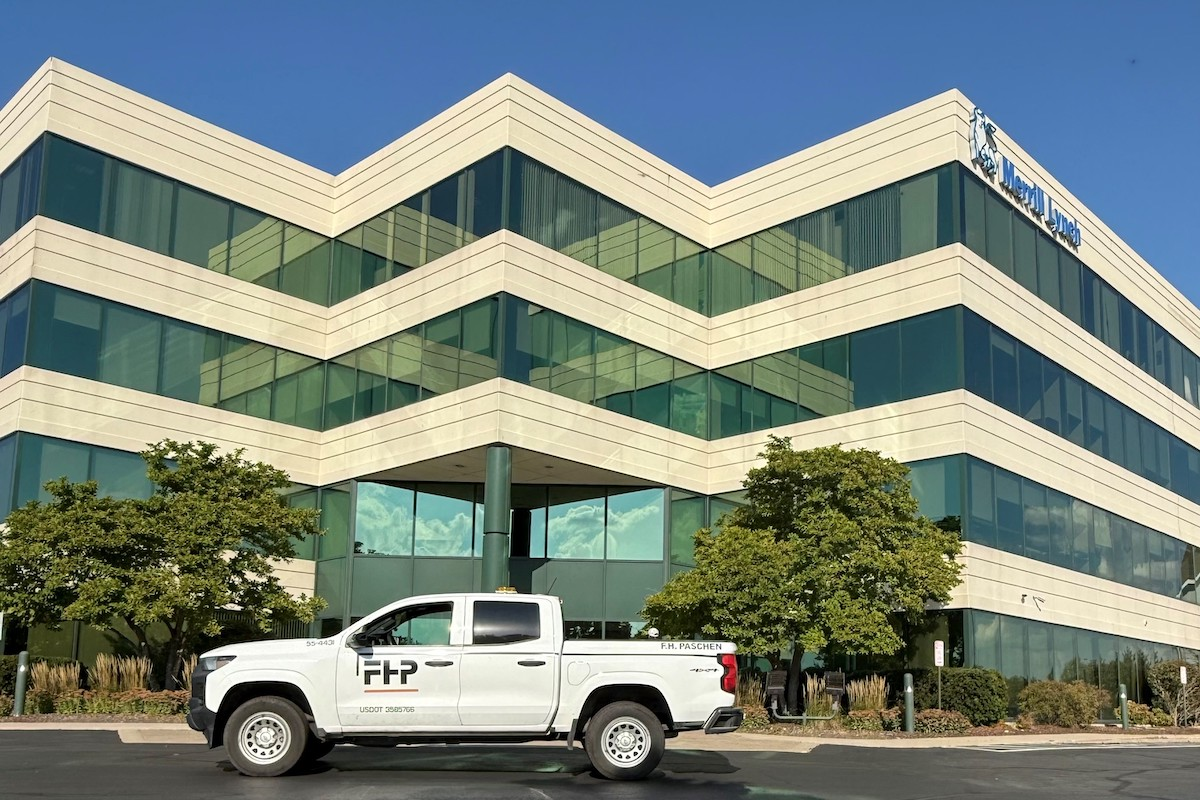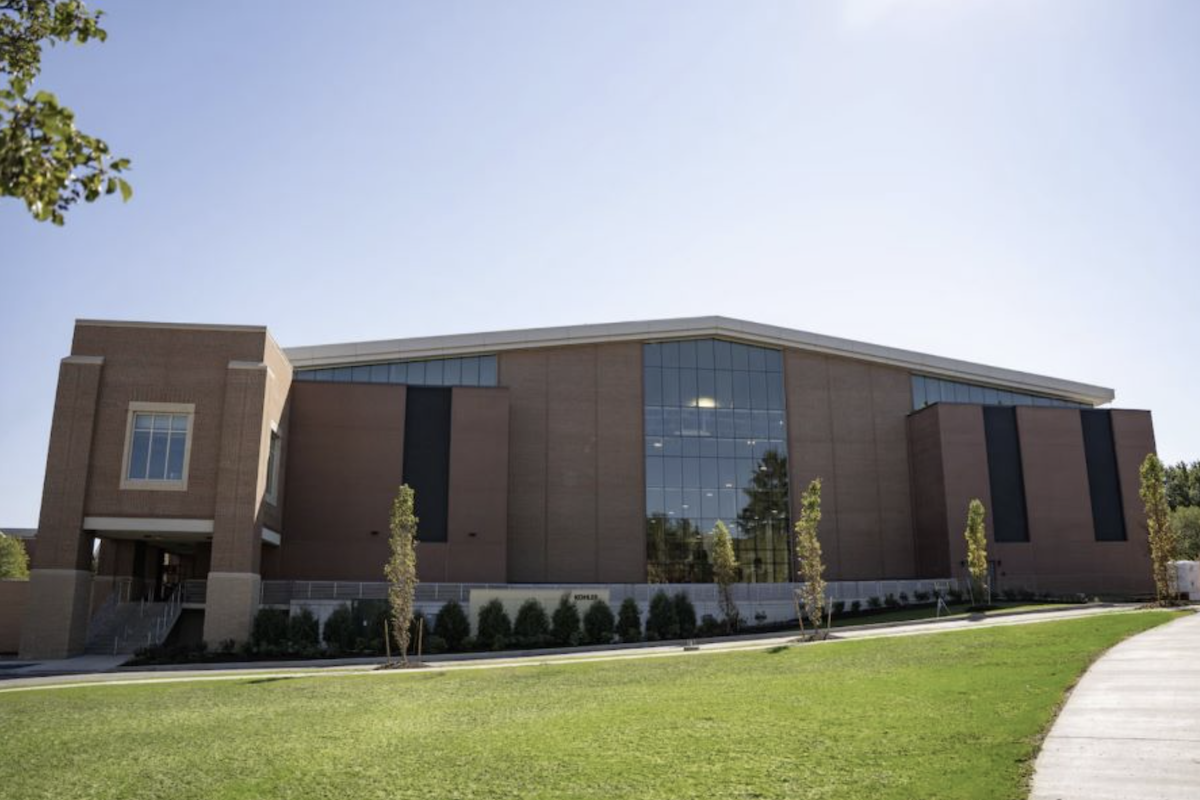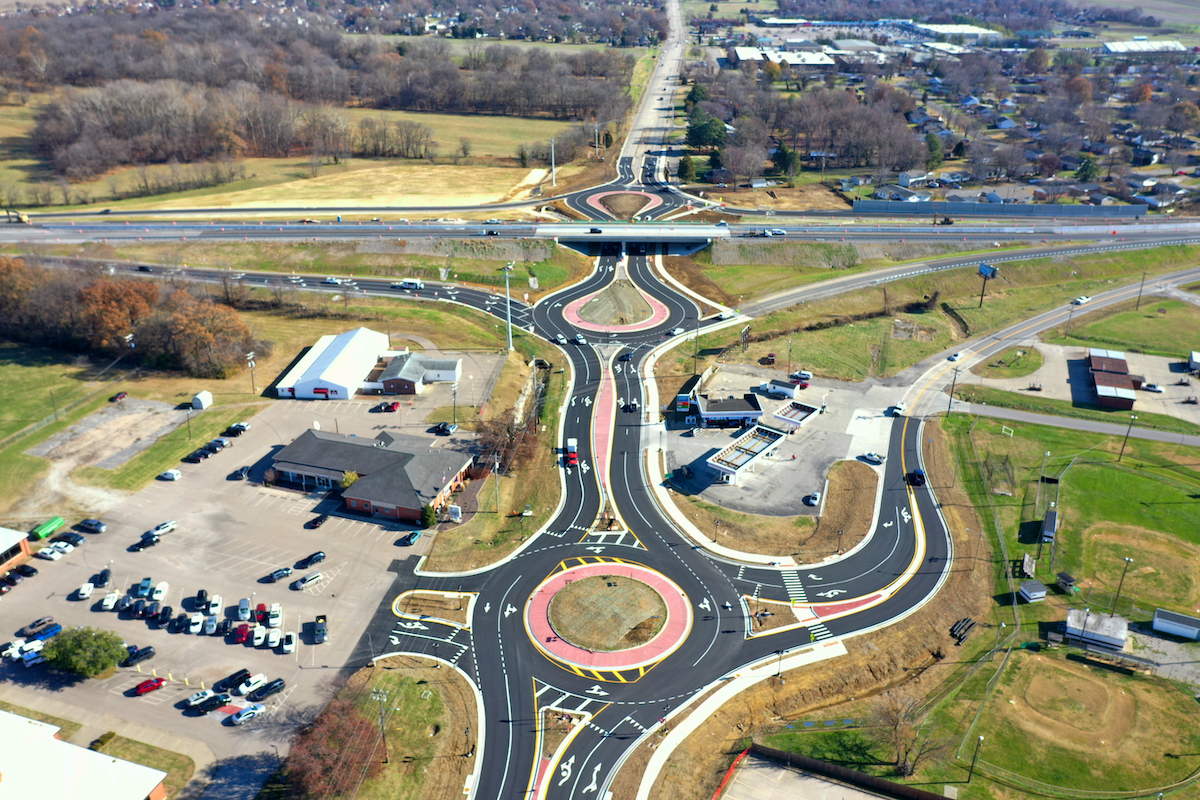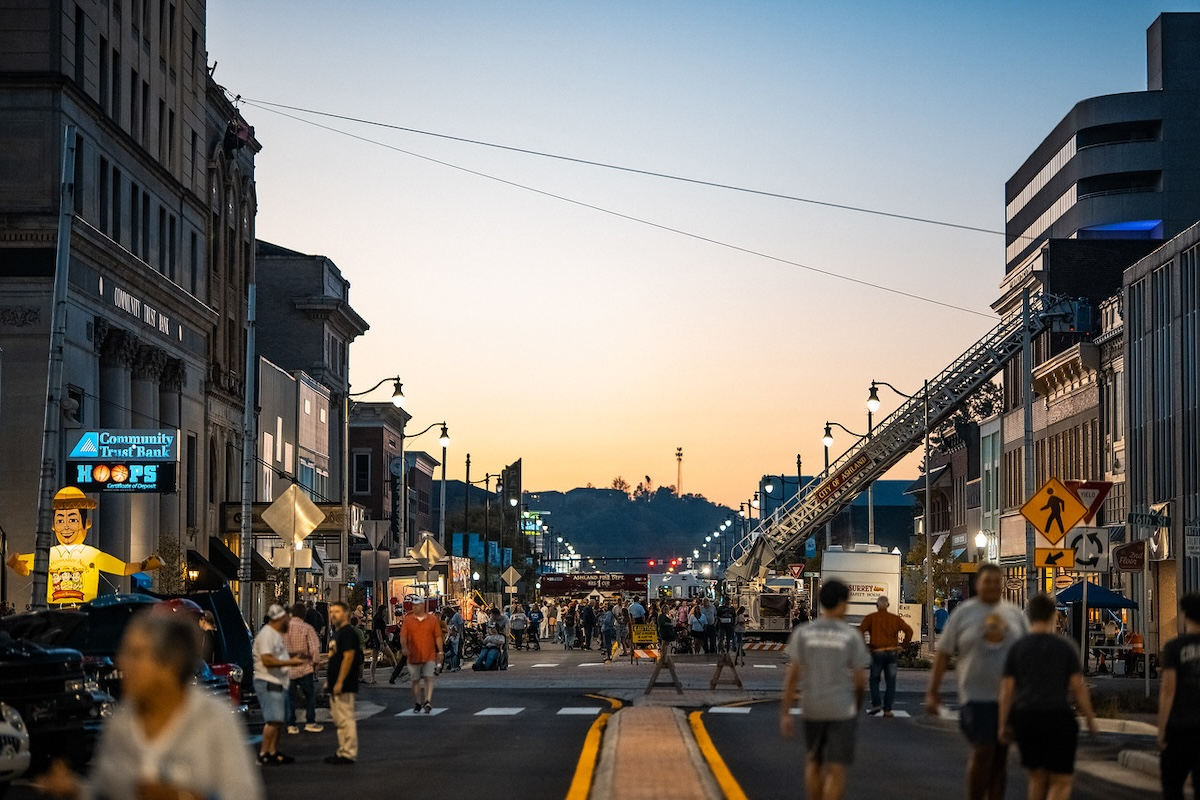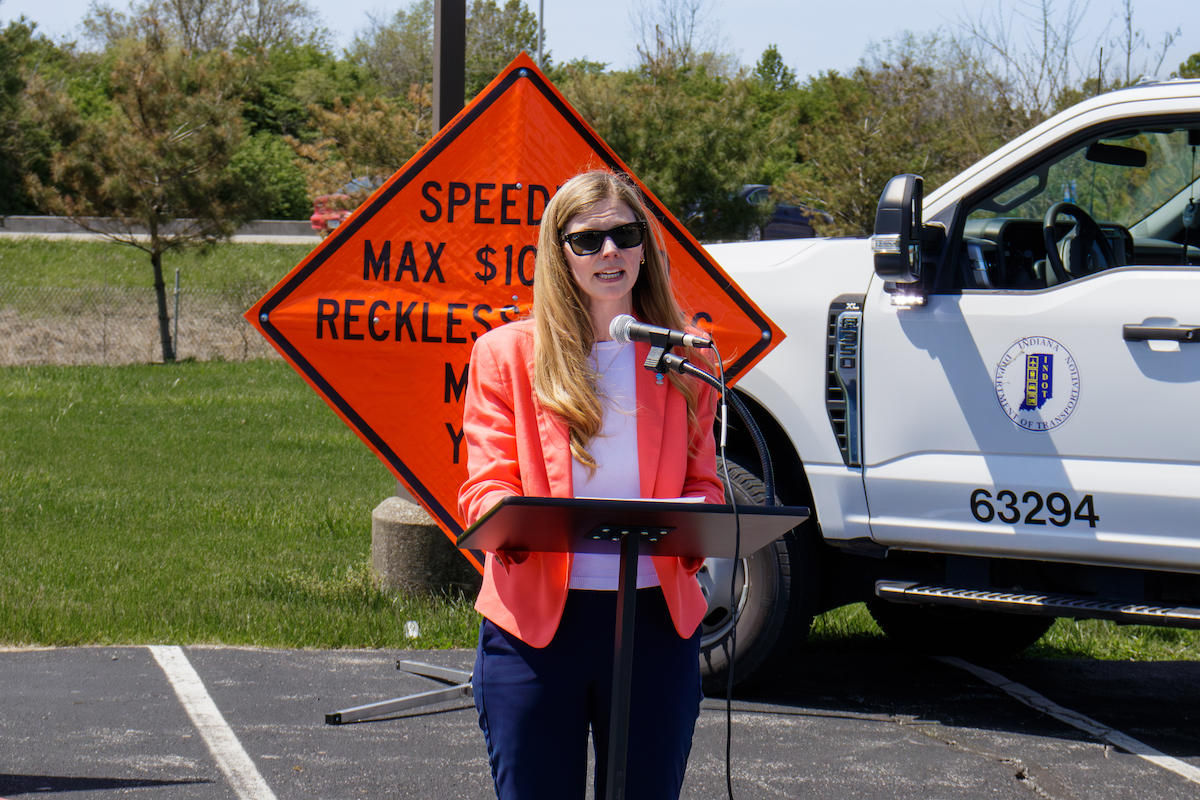Construction work recently began on a quarter-mile test bed of U.S. Highway 231/U.S. Highway 52 in West Lafayette that the team will use for testing how well a patent-pending system designed by Purdue engineers can provide power to a heavy-duty electric truck traveling at highway speeds.
“Thanks once again to some engineers and pioneers from Purdue, we’re developing the world’s first highway test bed for wireless charging,” said Indiana Gov. Eric Holcomb to attendees of COP27, a United Nations environmental conference that took place in Egypt in 2022. “We will be testing whether concrete can charge passing trucks.”
The electric truck, provided by Indiana-based company Cummins Inc., will drive over the test bed as part of a pilot program tentatively planned to start next year. The hope is to electrify a section of an Indiana interstate in the next four to five years.
A few other states and countries have also begun testing roads that wirelessly charge EVs. But making this possible for highways — and heavy-duty trucks in particular — is a unique challenge. Because vehicles travel so much faster on highways than city roads, they need to be charged at higher power levels.

| Your local Wirtgen America dealer |
|---|
| Brandeis Machinery |
The Purdue-designed wireless charging system is intended to work at power levels much higher than what has been demonstrated in the U.S. so far. By accommodating the higher power needs for heavy-duty vehicles, the design is also able to support the lower power needs of other vehicle classes.
“If you have a cellphone and you place it on a charger, there is what’s called magnetic fields that are coming up from the charger into that phone. We’re doing something similar. The only thing that’s different is the power levels are higher, and you’re going out across a large distance from the roadway to the vehicle,” said Steve Pekarek, Purdue’s Edmund O. Schweitzer, III Professor of Electrical and Computer Engineering, in an episode of “American Innovators,” a Made in America series by Consensus Digital Media. “This is a simple solution. There are complicated parts of it, and that we leave to the vehicle manufacturers.”
In the wireless charging system that Purdue researchers have designed, transmitter coils would be installed in specially dedicated lanes underneath normal concrete pavement and send power to receiver coils attached to the underside of a vehicle.
Other wireless EV charging efforts are also using transmitter and receiver coils, but they have not been designed for the higher power levels that heavy-duty trucks need. The Purdue-designed coils accommodate a wider power range — larger vehicles would not need multiple low-power receiver coils on the trailer to charge from the road, which has been proposed to meet the high-power demands. Instead, in the Purdue design, a single receiver coil assembly is placed under the tractor, greatly simplifying the overall system.
Purdue researchers have also designed the transmitter coils to work within concrete pavement, which makes up 20 percent of the U.S. interstate system. Other coil designs have only been developed for use in asphalt pavement.
The team has completed testing of how well 20-foot-long sections of concrete and asphalt could handle heavy loads with the transmitter coils embedded. The researchers imitated truck traffic by having a machine repeatedly drive a loaded one-half semi axle over the pavements. Alongside the pavement mechanical tests, the team has also done lab tests verifying the electromagnetic performance of the bare transmitter coils and the receiver coils.
Most real-world deployments of wireless pavement charging in the U.S. are led by members of ASPIRE. Purdue is a founding member of ASPIRE and Nadia Gkritza — a Purdue professor of civil engineering and agricultural and biological engineering — is the campus director of ASPIRE’s Purdue location.
ASPIRE’s members at Purdue and Cummins are also leading a project funded by the U.S. Department of Energy to develop an EV charging and hydrogen fueling plan for medium-duty and heavy-duty trucks on the Midwest’s Interstate 80 corridor. The corridor serves Indiana, Illinois, and Ohio. The plan will examine the use of the wireless power transfer technology that Gkritza and her team are testing in West Lafayette.
“We don’t envision 100 percent of the roads being electrified,” Gkritza said in an episode of “Resources Radio,” a podcast by Washington, D.C., research institution Resources for the Future. “But we see the potential for dynamic wireless power pavement technology as complementary to an expanding network of EV charging stations that we will see very soon here in the U.S. We feel it would be useful in areas where charging stations are scarce in underserved communities, even supporting transit routes where initial charging at the depots and terminal stations might not be enough and there might need to be some charging in between the routes.”
The researchers anticipate that it may be 20 to 30 years before EVs can receive the full power they need while driving at highway speeds. It is up to EV manufacturers to decide whether to incorporate receiver coils into their vehicles.


















